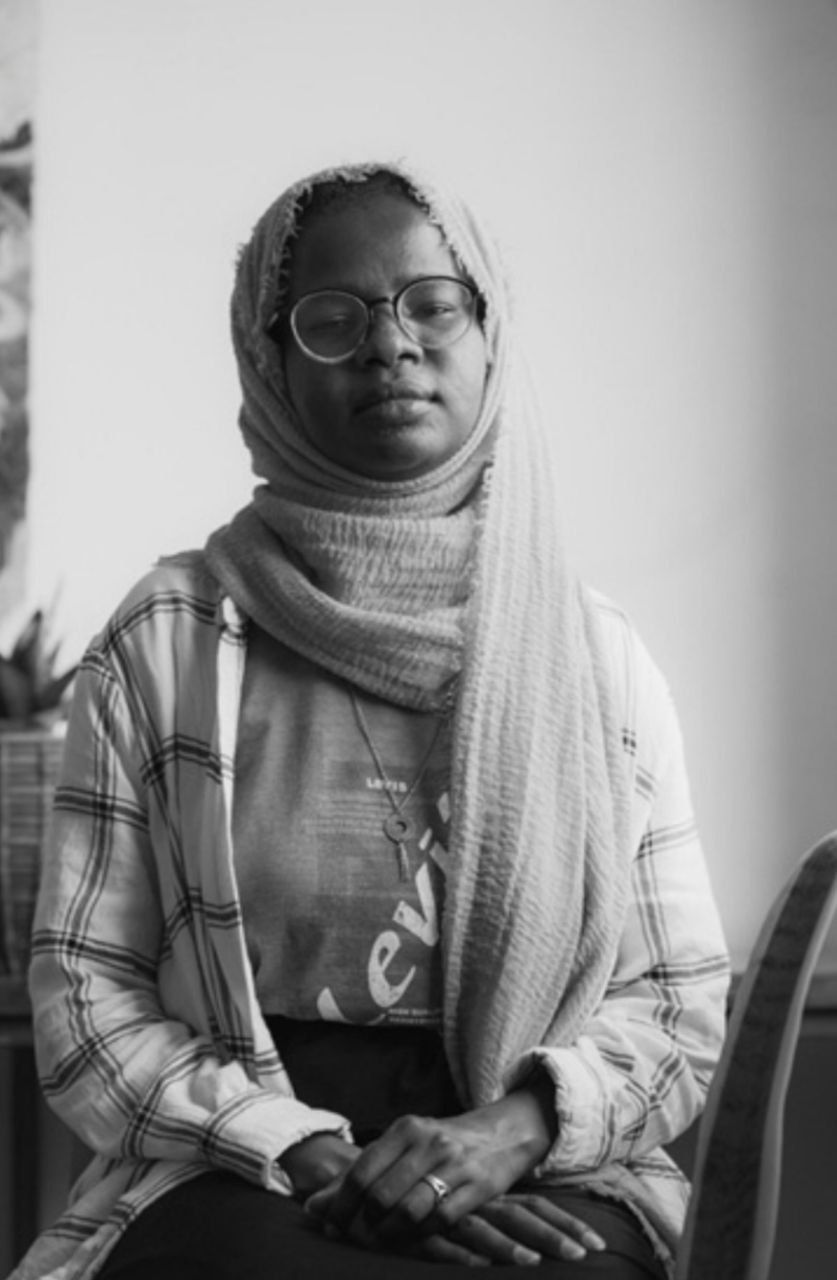When I first learned about Rwanda, it was during the 30th anniversary of the 1994 Rwandan genocide. It was a complete coincidence, I was returning from a neighboring country when the organizers mistakenly booked my flight to Kigali. I took the opportunity to visit what I had heard was one of the cleanest and safest countries in Africa. My knowledge about the genocide was general, but once I was there, I was surprised by how deeply the country is connected to its violent history. As a researcher focused on cultural heritage, particularly in post-conflict societies, I began asking myself: How do we integrate traumatic memories into our collective memory? How do we remember certain events, and how are they preserved?
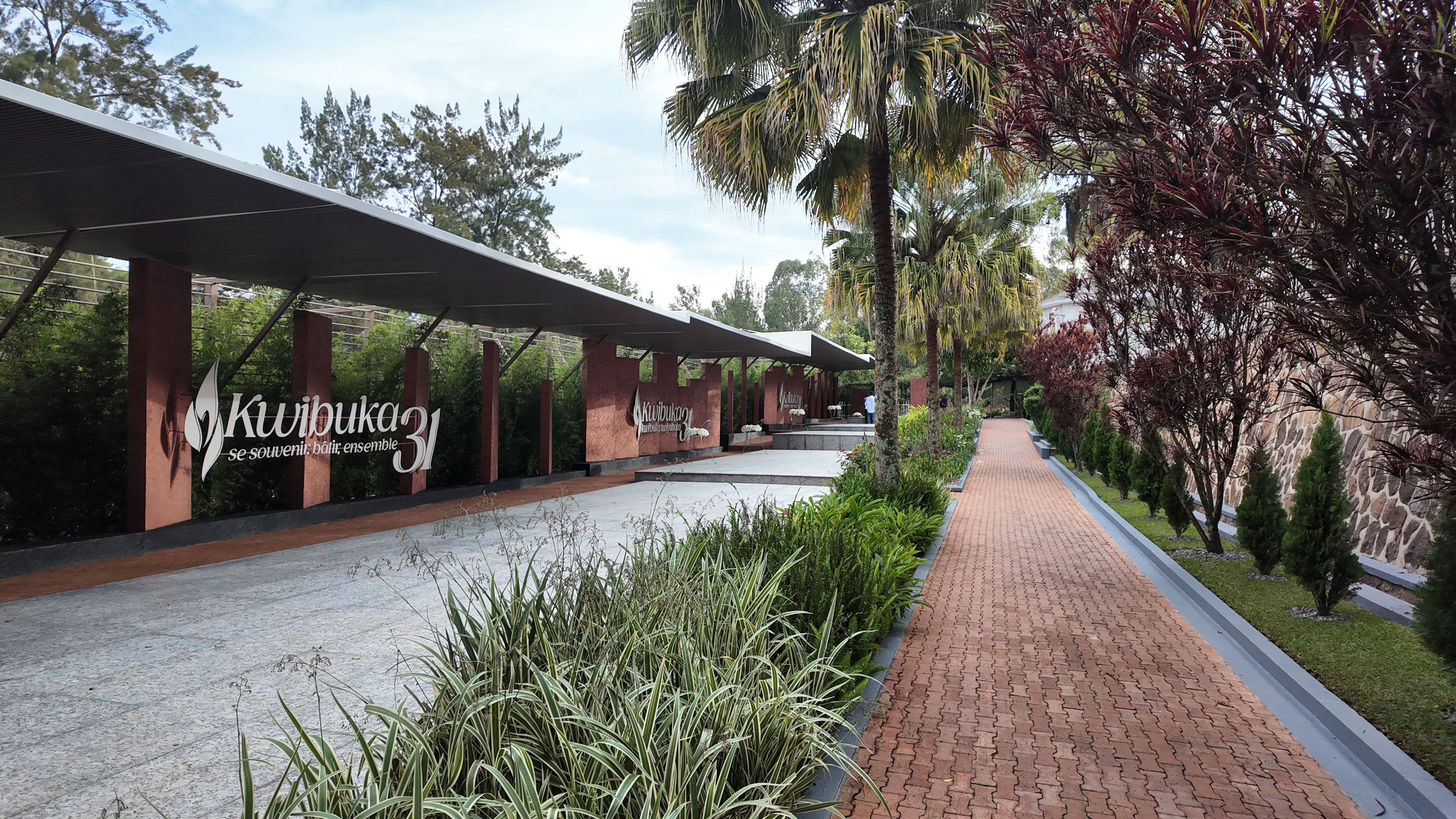
Closed graves at Kigali Genocide Memorial. Source: Nora Adel
These questions are not just academic for me; they are both personal and professional. As a Sudanese, I come from a region that has been shaped by ongoing conflicts since colonial times. I saw strong similarities between Sudan and Rwanda. While each country is in a different phase of conflict or recovery, I realised that Rwanda’s experience could offer valuable lessons for Sudan, which is still in the midst of war.
This curiosity led me to focus more intently on Rwanda. I wanted to understand how a country so marked by violence has built frameworks of remembrance through museums, cultural centres, and public discourse. This article is the product of my journey: a Sudanese perspective on Rwanda’s path from tragedy to rebuilding and remembrance.
“Be comforted, Rwanda
Rest, Rwanda
Take heart, it will never happen again
The tears you shed
The deep sorrow
And the grief will not return
Mother, take heart
Take heart, it will never happen again”
The above verses are translated from part of the song “Impore Rwanda,” which translates to “Rwanda is Fine,” that was released in 2021 to commemorate the 27th anniversary of the 1994 genocide in Rwanda. Many prominent artists contributed to this song to renew and remind Rwandans of the commitment to “never again” commit atrocities against each other, and to remember those who were lost. “Never Again” is a phrase that has its global association, yet is deeply rooted in the national context of Rwanda.
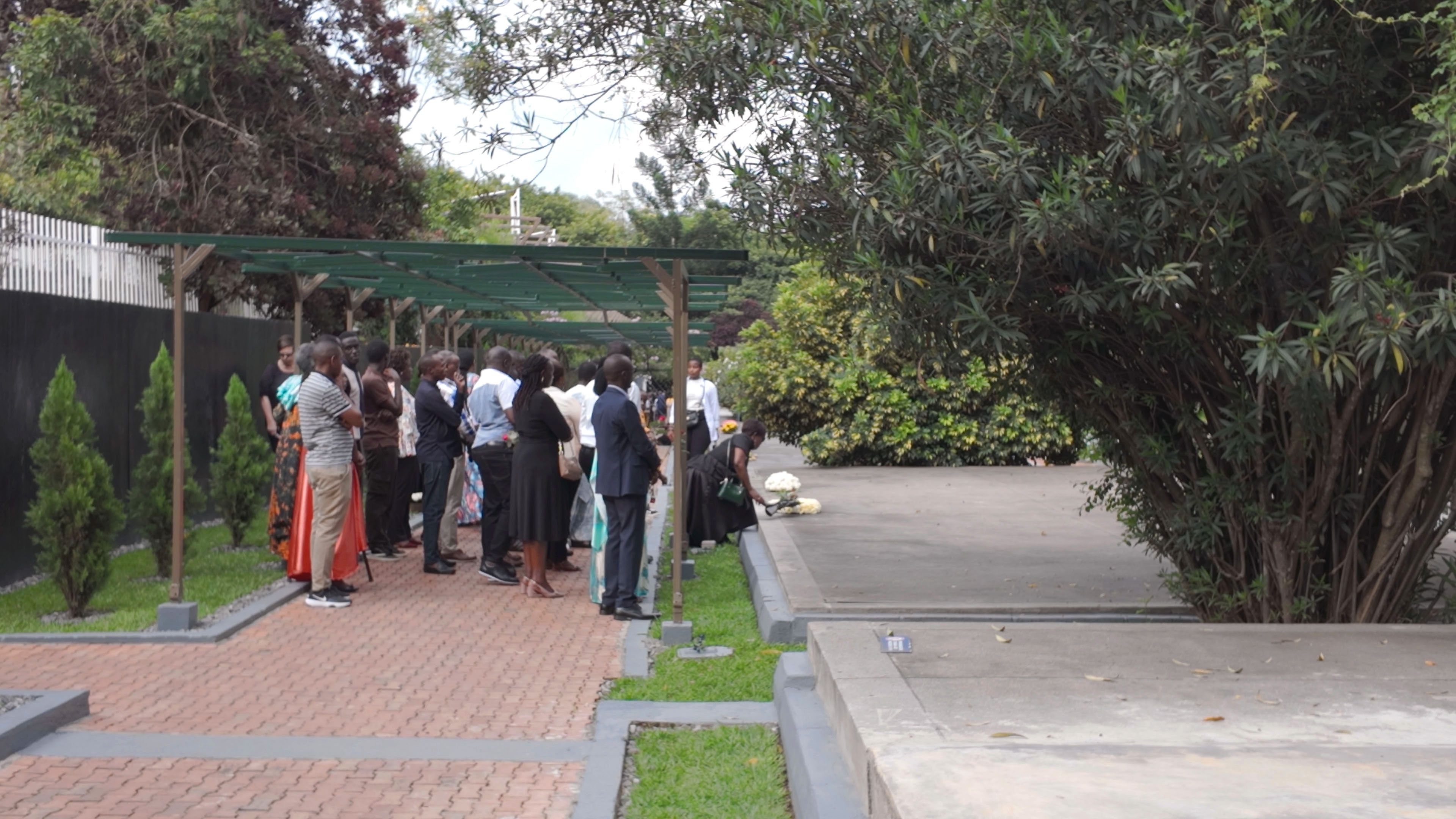
Families putting flowers in graves during Kwibuka 31. Source: Nora Adel
The Rwandan genocide of 1994 led to the killing of about 800,000 people in approximately 100 days between April and July. Most of the victims were Tutsi, who were targeted by Hutu extremists because of their ethnicity. Some moderate Hutu and minority Twa people were also killed. This made up about 11% of Rwanda’s population at the time.
It wasn’t until the 1994 genocide that Rwanda captured global attention, drawing intense focus from the media, international politics, the United Nations, NGOs, and Western scholars. Since then, academic discussions about Rwanda have been so dominated by the genocide that even works unrelated to it often reference the term "genocide" in their titles or subtitles. It also created a sharp break in the way Rwandan history is written post-1994, scholarship is largely shaped by the lens of the genocide and often adopts a purpose-driven perspective, interpreting earlier inter-group conflicts as events inevitably leading up to the genocide.
Rwanda in the Pre-colonial Era
The emergence of the kingdom of Rwanda is widely accepted to have occurred around the 15th century, ruled by the royal family of the Nyiginya dynasty, continuing through the pre-colonial period in the late 19th century. Alexis Kagame, a Rwandan cleric, historian, and believed to be the father of Rwandan history, traced the emergence of the Rwandan Kingdom back to the 10th century, to the Abatutsi (Tutsi) pastoralists and linking it to the mythical founder Gihanga Ngomijana. Which is a fact that is heavily criticised by other scholars more notably Belgian historian Jan Vansina, who claims that the Rwandan state evolved gradually between the 15th and 19th centuries, not only shaped by the Abatutsi royal family, but also by existing Abahutu (Hutu) agriculturalist communities.
These conflicting narratives, which emphasise the dominance of pastoralists as a ruling class and the subordination of agriculturalist and peasant societies, were later exploited by German and Belgians colonial powers to take advantage and divide the three social groups, reinforcing and codifiying the ethnic identities among the Abatutsi, Abahutu, and Abatwa, which, according to some scholars, contributed to the tension that ignited the 1994 genocide.
I talked with Shema Karita, a young Rwandan from the first generation after the genocide. He emphasised the belief that the three groups, Abahutu, Abatutsi, and Abatwa (Twa), were functioning more as social classes than ethnic communities, as the distinctions among them were based on social status, power, and wealth. He also mentioned that this socio-ethnic division was not a cornerstone, allowing individuals to transition between groups according to their accumulation of wealth, cattle, or favour at the royal court; this process of social mobility is known in Kinyarwanda as "Kwihindura”.
The Genocide of 1994 Against the Tutsi (Interahamwe)
The Rwandan genocide in 1994 was a culmination of years of civil conflicts, which started in 1990 when the exiled Rwandan Patriotic Front (RFP) invaded the country from Uganda. Some researchers and writers argue that the genocide was not simply the result of ethnic hatred, but rather a consequence of decades of colonial and postcolonial ethnic politicization.
As many scholarly sources suggest that genocide and atrocities cannot be explained as the outcome of ethnic hatred and ideology, but have their origins in struggles over power and wealth, ethnic identity emerges as a tool or consequence of deeper political and social conflicts. For generations born after the genocide, like Shema, one unanswered question: How could a country where everyone speaks the same language commit such brutal violence, where even neighbors and relatives turned on each other?
Western media coverage of the genocide often portrayed it as just a binary conflict between two ethnicities, similar to other simplified ethnic wars; however, the Rwandan genocide was deeply rooted in political representation and conflict over power. In this simplified narrative, Hutu were compared to the Nazis and the Tutsi to Jews, a narrative that can be challenged with deeper analysis of Rwanda’s local social and political context.
Scholar Klaus Bachmann, for instance, challenged this narrative by focusing on Rwandan cultural norms and the culture of obedience to the state and church. He argues that the ordinary people who participated in the mass violence as actors were divided between obeying an authoritarian system and religious authorities, which must be obeyed, not because they were inherently violent.
Since the colonial era, the Catholic Church, which closely aligned itself with the state, instilled a culture of obedience, and many generations were raised within a strict hierarchical and moral framework that equated disobedience with defying God. This legacy of moral authority and submission helps explain why some survivors recall that perpetrators said they were merely following orders, both state and religious figures. Thus, it is reasonable to argue that it was not merely hatred, but also deference to authority, fear of disobedience, and a learned sense of moral duty to obey, that contributed significantly.

Sainte Famille Church was built in 1913 as one of the first catholic mission outposts in Rwanda. Source: Trip Advisor
Post-genocide: Museums and Commemoration
If you visited Rwanda in the last two decades, one obvious thing you will notice is the numerous memorial sites and genocide related museums, along with art deeply rooted in the violent history of the country. These memorials and museums attracted tourists and positioned Rwanda among prominent global destinations for “dark tourism”- the practice of visiting sites associated with death, tragedy, or suffering, such as Auschwitz (Poland), Hiroshima (Japan) and the Transatlantic Slave Trade (Senegal and Ghana). Since the early 2000s, this form of tourism has grown significantly as part of a worldwide trend where countries use trauma and memory as cultural capital to attract visitors.

Walls inscribed with the names of victims at Kigali Genocide Memorial. Source: Nora Adel
With the continued discovery of bodies and bone remains following the genocide, survivors and local communities began creating informal burial and commemoration sites to honor victims. These grassroots initiatives were later taken by the government to be formalized and integrated into the national memory policy that kept developing through those three past decades.
Rwandan Prof. Eric Ndushabandi believes that this led to the creation of a national memory, dismantling colonial ethnic perceptions and fostering a unified nation, along with a new identity based on concrete or objective elements such as justice, socio-economic integration, or symbolic reparation. Therefore, the leadership at that time took on the responsibility of integrating this memory into the country's history, beginning with commemoration, which started in 1994 and 1995, as well as the institutionalization of the construction of commemorative sites.
During the 10th anniversary of the genocide in 2004, the government inaugurated the Kigali Genocide Memorial after its renovation and established the Kwibuka Week, the official week for commemoration to this day. The word "Kwibuka" means "to remember" in Kinyarwanda.

Kwibuka 31 ceremonies at Kigali Genocide Memorial. Source: Nora Adel
During this year’s Kwibuka week, I had the chance to observe and speak with many Rwandans. What struck me most was how the entire country collectively entered a state of mourning. You will not hear music, and wedding celebrations are postponed. People focus on going to mourn in public spaces and hearing survivors' testimonies, including in their neighborhoods (cells and sectors).
As shops were closed during certain hours, my Rwandan neighbor explained that during Kwibuka week, some shops often close as early as 4 PM so that people can participate in community commemorative activities. Even in Gisimenti, one of Kigali’s most vibrant streets, usually filled with loud music at night, everything fell silent during Kwibuka. Local and international restaurants stopped playing music, and groups of young men and women dressed in black could often be seen passing by. It was a visible, shared expression of mourning across the city.
Kigali Genocide Memorial
The Kigali Genocide Memorial is located in Gisozi, in the northern part of Kigali, Rwanda's capital. It serves as the national site of remembrance for the 1994 genocide against the Tutsi, where the remains of over 250,000 victims are buried. Each year, on April 7th, the official commemoration week (Kwibuka Week) begins with a ceremony where President Paul Kagame and First Lady Jeannette Kagame light the “Flame of Remembrance”, a symbolic fire that burns for 100 days, representing the duration of the genocide. It also signifies hope, resilience, and a national commitment to “Never Again”. The ceremony is attended by government officials, genocide survivors, diplomats, and international guests.
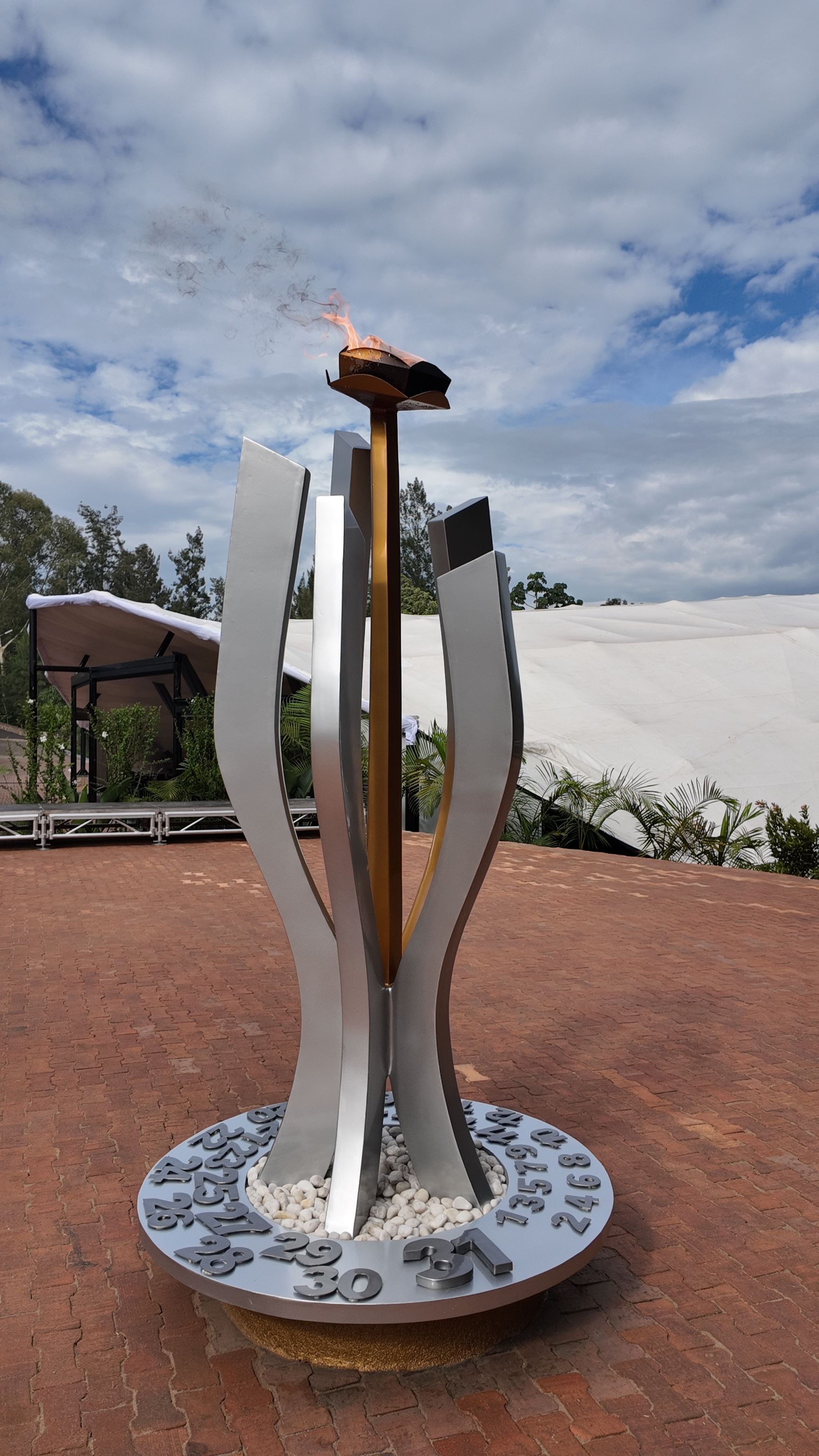
Flame of Remembrance at Kigali Genocide Memorial. Source: Nora Adel
The memorial features a permanent exhibition that presents a chronological narrative of the genocide, photographs of victims, a section on other genocides (e.g., Holocaust, Cambodia) and a section for a children’s memorial. Alongside, there are open and closed graves, walls inscribed with the names of victims, and an open space for reflection and mourning. The Kigali genocide memorial emphasizes the identity of victims as predominantly Tutsi and reinforces the role of the Rwandan Patriotic Front (RPF) and its leader, Paul Kagame, as liberators and saviors.
Generally, in the context of the evolving African museological models, decolonization has yet to be fully implemented. Curation is largely influenced by Western narratives. For instance, South Africa is one of the regions with a history marked by violence, which led to the creation of monuments and commemoration spaces in South Africa and Angola. However, some researchers believe they are caught in a postcolonial memorial complex and are heavily impacted by power dynamics, which amplify nationalist agendas centered on national heroes, while suppressing grassroots, rural, or regionally diverse memories.
Nonetheless, there are notable African efforts to reimagine museums rooted in Indigenous African heritage, such as the Women's Museum in Sudan, Nyala, curated by Fatima Mohamed Al-Hasan, and the Women’s History Museum of Zambia. Both challenge the Western approach of static exhibitions and objects behind glass by exploring and engaging with living heritage, memory, and archives in ways that consider and include the communities involved and their heritage practices. Another example is Nana Oforiatta Ayim’s Mobile Museums in Ghana, where she critiques how museums can be intimidating for locals and how the architecture and functionality of Ghanaian museums often do not serve the community. Her mobile museums bring exhibitions to towns and villages, enabling communities to reclaim their heritage and participate in selecting and narrating what constitutes their identity.
These examples not only provide alternatives but also demonstrate how museums can be deeply rooted in African cultures and free from Western legacies. For the Kigali Genocide Museum, the situation is more complex. While the site allows Rwandans to practice the tradition of visiting graves regularly, especially during mourning periods, it is often criticized for mirroring global models of commemorative sites, particularly the Holocaust museums in the United States and Israel.
Initially, guided tours were conducted by survivors, a practice that some researchers viewed as a way to empower individuals by allowing them to tell their own stories and claim their narratives. However, this approach was later replaced by trained staff employed by the government, reflecting a shift in how official remembrance is curated.
Some researchers, such as Johanna Mannergren Selimovic and her colleagues in Peace and the Politics of Memory in Post-Genocide Rwanda, argue that foreign funding and international influence impact how the genocide remembrance is handled at the local level. For instance, shifts in donor priorities have led to changes in emphasis, from archiving toward education, demonstrating how international engagement plays a role in reimagining post-genocide Rwanda.
The curation of the memorial is now managed by the National Commission for the Fight Against Genocide (CNLG) in collaboration with the British-based Aegis Trust, which also curated the National Holocaust Centre in the UK. Scholars have noted that this partnership introduces internationalized aesthetics and global memory practices into the Rwandan context, influencing how memory is framed and experienced.
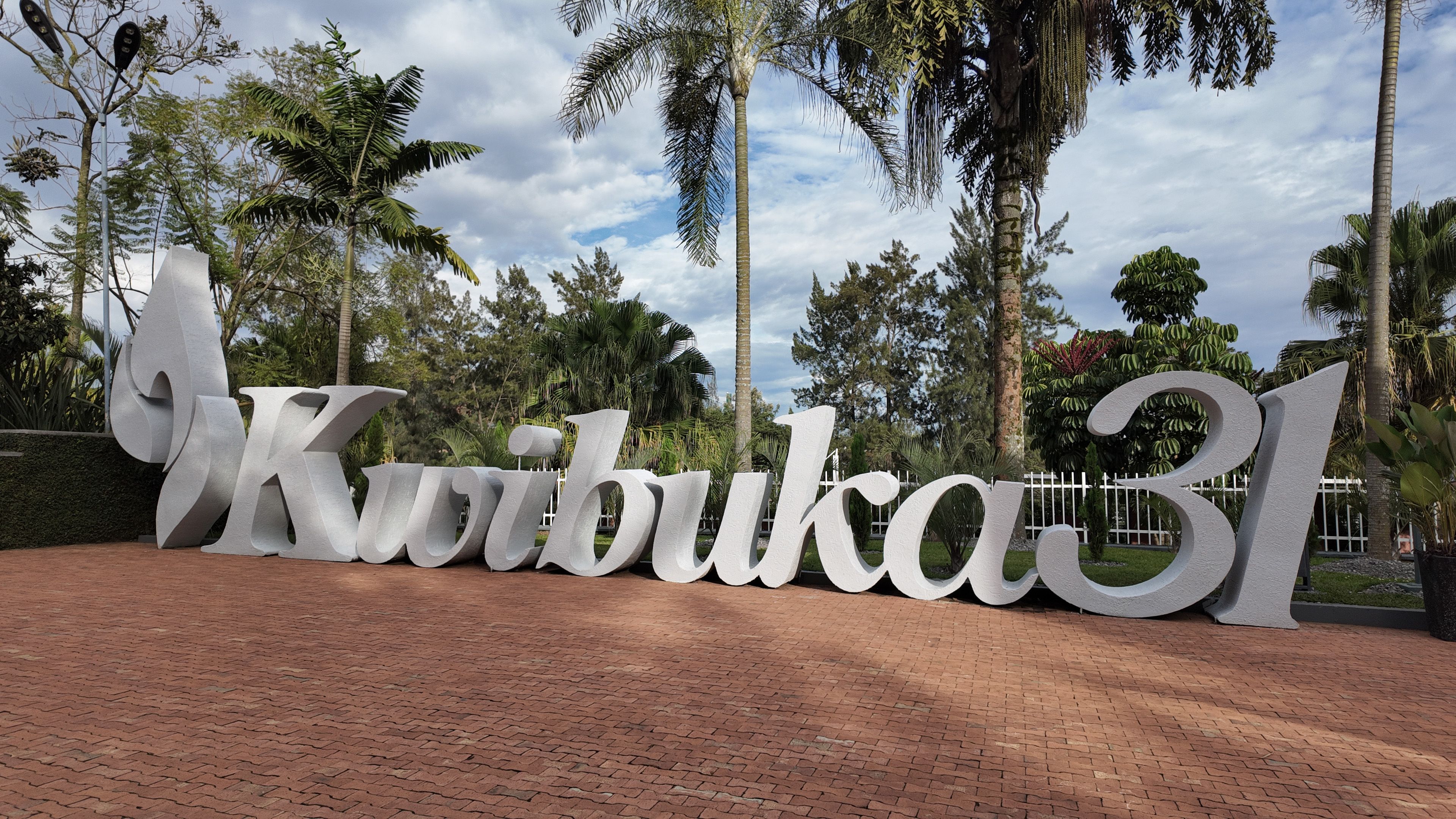
Kwibuka sculpture at Kigali Genocide Memorial. Source: Nora Adel
However, these critiques are not fully accepted within Rwanda. In conversations I had with many young Rwandans, they described the government's memorial efforts as both necessary and powerful. For them, the Kigali Genocide Memorial serves not only as a tool against genocide denial but also the dignity of the victims. For them, the memorial represents a meaningful and respectful response to Rwanda’s tragic past.
Campaign against Genocide
Located within Rwanda's National Parliament in Kigali, the Campaign Against Genocide plays a significant role in the country's efforts to memorialize the 1994 genocide and promote a unified national narrative. The museum features nine exhibition rooms displaying photographs, texts, wax figures, and battle simulations of the invasion of the Rwandan Patriotic Army’s (RPA) campaign to Kigali to stop the genocide and assist in rescuing civilians. As this was the same parliament used during the genocide, and a military base for the RPA, the building still bears holes and traces from the battles.
The museum's narrative curation is designed to emphasize the heroic role and efforts of the RPA while underscoring the international community's inaction. During my visit, I observed three different schools touring the museum and learning about their country's history from a guided presentation. Learning about a country’s history is undeniably crucial, yet this experience prompted a reflection on whether the curators viewing the museum serve more as an education about the ruling political party than a mere historical archive.

Flowers on an open grave in the open space at Kigali Genocide Memorial. Source: Nora Adel
Ingabo Museum
While Rwanda’s cultural scene is often seen as dominated by state-sponsored museums and cultural centers, there is a wide, growing number of grassroots initiatives from diverse art and cultural sectors in Kigali. Despite this diversity, the genocide narrative remains dominant. The Museum Inagbo is an independent, privately run museum that features African storytelling and art for a diverse audience of national and international officials, students, expatriates and more. The museum showcases various exhibitions, most notably “The Path of Hardship” “INZIRA Y'INZITANE”, a psychological walk-through art installation that artistically narrates Rwanda's challenging path from 1994 to 2024.
This installation serves as a compelling representation of the country's journey in integrating the violent history into the cultural heritage and the national memory. It reflects a nation caught between efforts to bring justice for survivors and yet not fully inclusive for different groups in the broader social justice process and reconciliation. A safe and peaceful country with an increasing record of human rights violations, but no large-scale communal violence has occurred since the 1994 genocide, testing the efforts of both the state and the community to overcome obstacles for a complete societal transformation.

The Path of Hardship installation at Ingabo Museum. Source: Mohammed Awad
Sudanese Reflections
Being in a foreign country that has such a complex heritage showed me how difficult and counterproductive it is to judge everything only through readings or life experiences, where both are essential to understanding the context. Museums and cultural spaces are a deeply integrated part of a country’s justice system and political landscape.
Living in Rwanda has demonstrated to me that remembrance is not only about preserving the past, but also about shaping the future. The way Rwandans collectively mourn, remember, and are still trying to build one nation despite the violent past and ethnic divisions is powerful. As a Sudanese researcher witnessing my own country amid war, I see in Rwanda both a mirror and a map: a mirror of shared pain, and a guide toward possible healing. Dealing with the memory and heritage of violence is a vital part of building reconciliation in a country, but as Prof. Eric explained, it requires foundational elements such as economic development, equity, and justice.
